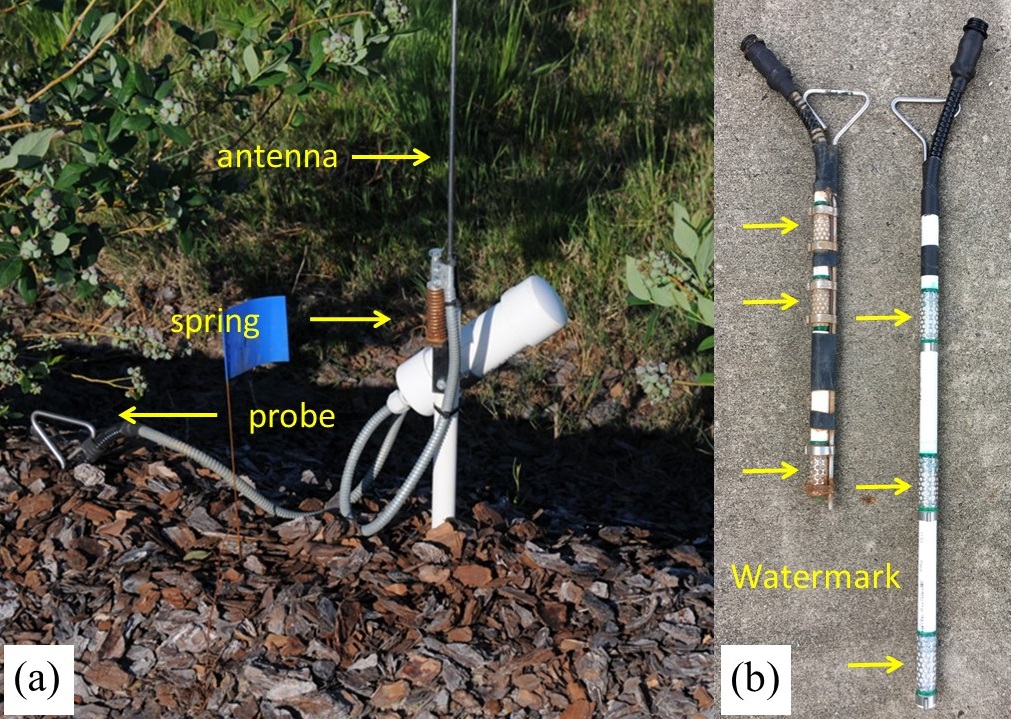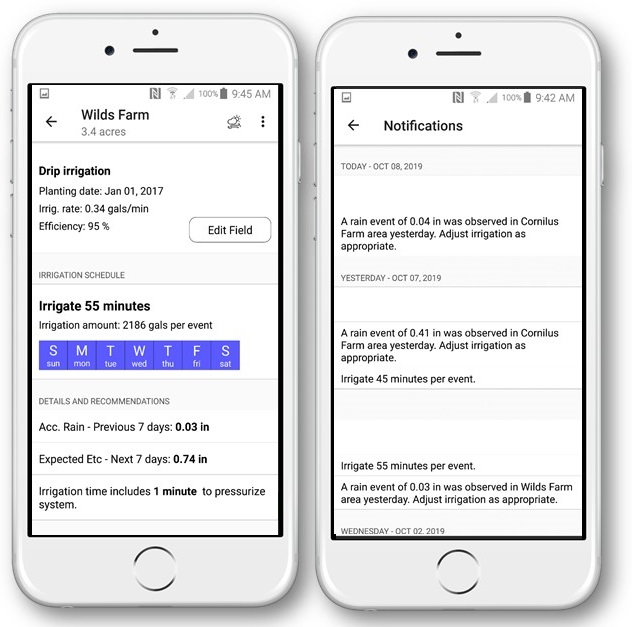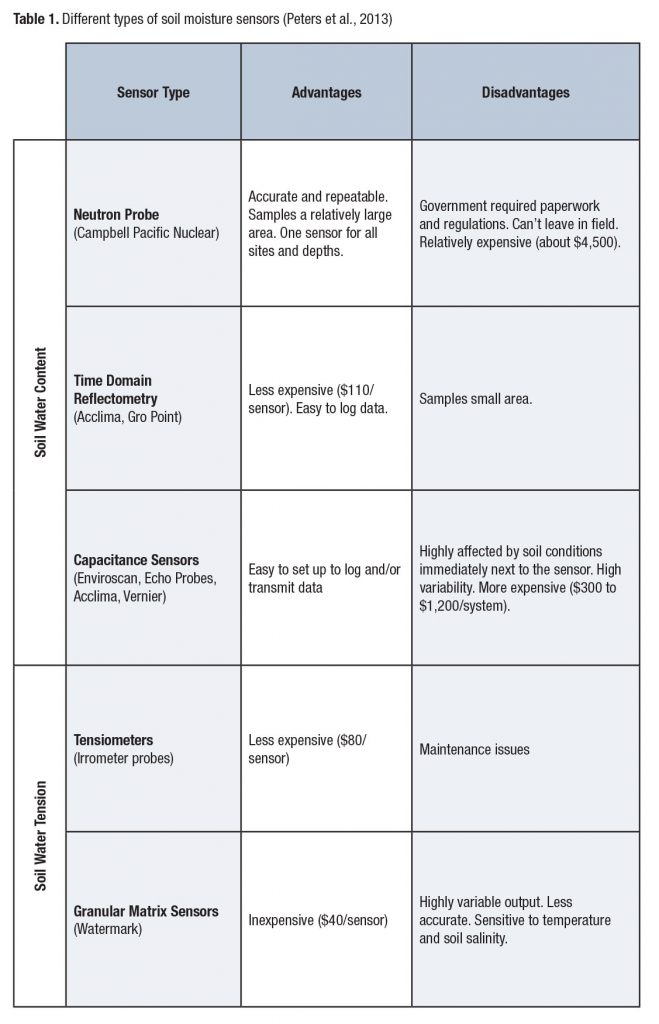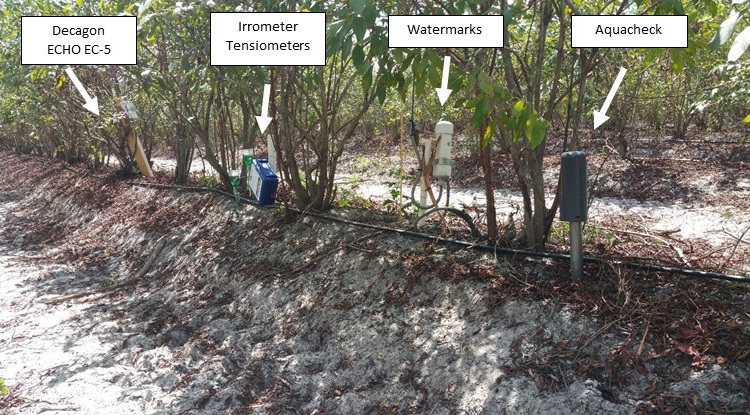
By Vasileios Liakos
One of the goals of the University of Georgia College of Agricultural and Environmental Sciences (UGA CAES) is to develop new irrigation methods and tools for crops. Researchers, including myself, Erick Smith, George Vellidis and Wes Porter, have been developing smart irrigation scheduling tools for blueberry growers in Georgia since 2015. Smart irrigation is a new method of irrigation that uses technology and information to make more accurate and faster decisions.
UGA has developed two smart irrigation tools for blueberries — the UGA Smart Sensor Array (SSA) and the Blueberry App.
SYSTEM RECORDS SOIL MOISTURE
The UGA SSA is a system that records soil moisture within fields. It consists of a monitoring system, a commercial server that receives soil moisture data wirelessly, and a website that presents soil moisture data and recommends irrigation rates. The monitoring system consists of smart sensor nodes and a gateway. Each node has a circuit board, a radio frequency transmitter, soil moisture sensors, thermocouple wires and an antenna (Figure 1a). Each node accommodates two thermocouples for measuring temperature and a probe that consists of up to three Watermark® soil moisture sensors (Figure 1b).
“Soil moisture sensors record soil water tension, and we realized very soon that farmers could not make irrigation decisions based on the sensor readings. It was necessary to convert sensor readings into amount of irrigation,” said UGA precision agriculture specialist George Vellidis.
To overcome this problem, we utilized soil properties and a model to convert soil water tension numbers into inches of irrigation that is needed to saturate the soil profile. Additionally, farmers can see in real time their soil moisture data to make irrigation decisions for each location in fields using a web-based interface that was developed by UGA.
IRRIGATION SCHEDULING APP

Blueberry growers can also use the Blueberry App on their smartphones to schedule irrigation (Figure 2). The app runs a model that uses reference evapotranspiration (ETo) data and the Penman-Monteith equation to calculate the irrigation needs of blueberries.
The innovation of the Blueberry App is that it is programmed to receive forecasted ETo data for the next seven days for every location in the United States from the Forecast Reference Evapotranspiration service of the National Oceanic and Atmospheric Administration. Precipitation data are received from the Georgia Automated Environmental Monitoring Network and the Florida Automated Weather Network (FAWN).

UGA has developed a crop coefficient curve that shows the water needs of blueberries in Georgia every year. The goal is to include more coefficient curves from other states. This will be capable if more blueberry growers use the app.
By knowing the total ETo for the next seven days and the crop coefficient values of the blueberries, the crop evapotranspiration of blueberries can be calculated, and irrigation events adjusted accordingly.
EVALUATION OF SOIL MOISTURE SENSORS
Another interesting project, involving soil moisture sensors and blueberries, began a few months ago. The objectives of the project are to 1) compare different commercially available soil moisture sensors in blueberry soil, 2) determine the accuracy of each type of soil moisture sensor in blueberries and 3) determine which soil moisture sensor type is best for use in blueberries.

The soil moisture sensors used in this project are Watermarks, Irrometer tensiometers, Aquachecks and Decagons (ECHO EC-5). The selection of these sensors was made based on their popularity in the United States. Table 1 shows advantages and disadvantages of different types of soil moisture sensors.
This study takes place at a UGA blueberry farm in Alapaha and at two commercial blueberry farms in Alma and Manor. At each site, the four different soil moisture sensor types have been installed close to each other along the beds to collect data to meet the objectives of the project (Figure 3).
Source: Practical use of soil moisture sensors and their data for irrigation scheduling by R. Troy Peters, Kefyalew G. Desta and Leigh Nelson, 2013, Washington State University.









